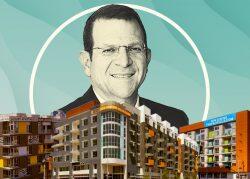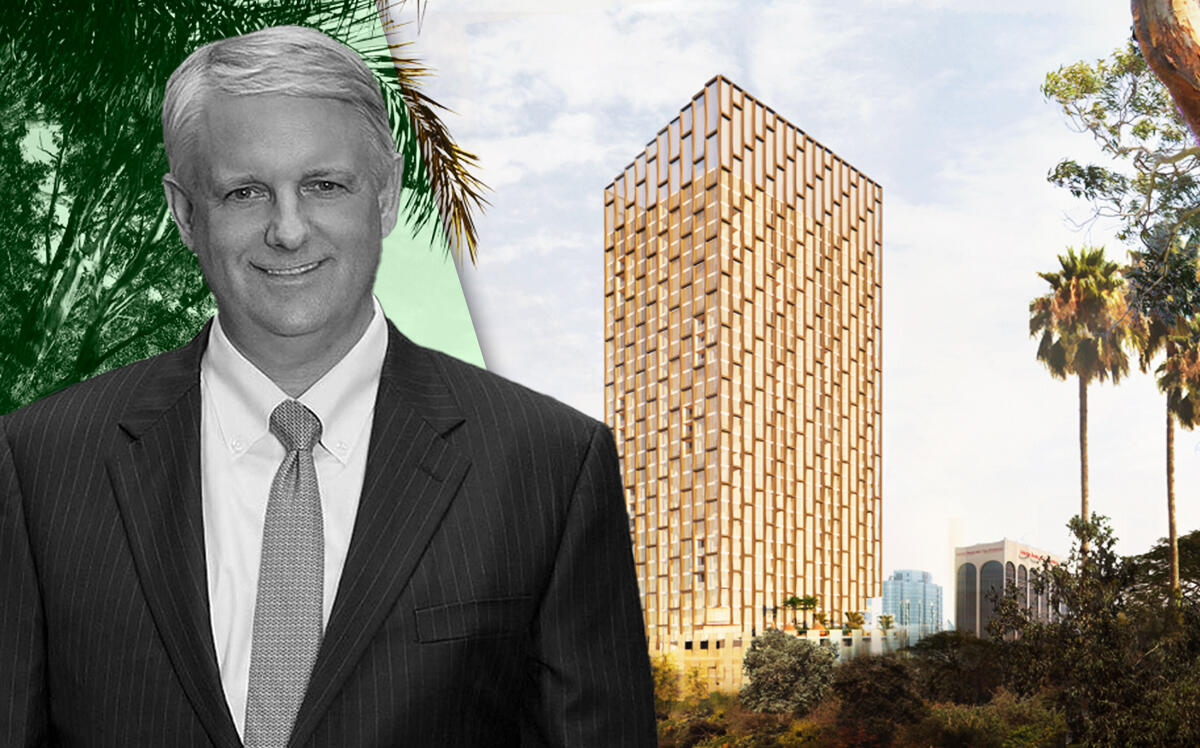In the summer of 2019, the City of Long Beach published an environmental report that detailed plans for a multifamily project by Trammell Crow Residential that would dramatically reshape a neighborhood of the coastal city and create its tallest building.
Now Trammell Crow Residential has actually bought the land.
The national developer, an arm of Dallas-based Crow Holdings, purchased the nearly 6-acre property, located at the corner of Golden Avenue and West Broadway, from the Port of Long Beach for $29.5 million, according to property records. The deal closed Sept. 1.
“Historically a neighborhood of smaller structures, this site was cleared for the construction of the World Trade Center and adjacent hotel and parking lots in the 1980s,” reads a description by Studio One Eleven, the architecture firm working on the design. “This project seeks to break down the megablock, reintroducing the historical street grid and bringing housing, live-work and retail spaces to round out a vibrant, mixed-use district.”
A representative for the City of Long Beach confirmed the property sale. Trammell Crow Residential, which bought the property through an LLC, did not respond to interview requests.
While the project, called Westside Gateway, has been in the works for years, the land deal comes just a few months after Trammell Crow notched a key approval: In April, the city’s planning commission signed off on the plan with modifications, an agency employee said, although further details of the approval were not immediately clear. The city planner assigned to the project also did not immediately respond to an interview request.
When details of Trammell Crow’s plans emerged in 2019, the plans immediately thrust the Westside Gateway project — which would rise atop empty parking lots in a prime corridor of Long Beach, a couple blocks inland from the L.A. River and adjacent to the city’s Cesar E. Chavez Park — into a small group of developments and potential developments that are quickly reshaping Long Beach’s skyline and adding density to what is already L.A. County’s second most populous city.
Plans called for a mixed-use complex with more than 1 million square feet that consists of seven different buildings, including two residential towers, four smaller residential buildings and a parking structure. The project would also have a 3,000-square-foot market and leave room for about 110,000 square feet, or about 2.5 acres, of open space, including 12,000 square feet for public open space.
The project’s tallest tower was slated to rise 40 stories, which, as of now, would count as Long Beach’s tallest building, taking the title from Ledcor’s Shoreline Gateway, a 35-story luxury apartment tower on Ocean Avenue about a mile east of the Westside Gateway project, that opened earlier this year.
The project’s second residential tower was slated to rise 21 stories, and the other residential buildings would be between five and seven stories, giving the complex a total of roughly 750 units.
Westside Gateway is one of a flurry of high-profile developments in Long Beach, which has seen a surge in interest in recent years in part because the port city’s housing costs have remained lower than those in the City of L.A. — even as Long Beach is struggling with its own affordability crisis. One report that compared home prices to local incomes, published in December, found that Long Beach had actually become more unaffordable than San Francisco.
“One thing about housing affordability is that, over time, people who can no longer afford expensive housing will slowly migrate to smaller cities close to the metro core, so in this case Long Beach — being within Los Angeles County and being close to Los Angeles — is definitely seeing the same impact,” Shane Lee, a data analyst with RealtyHop, the data company that published that report, said at the time.
Other major Long Beach proposals are less vertical. Earlier this month a team of developers unveiled plans for a 14-acre mixed-use project that would include 900 residential units and a 30,000-square-foot open air mall, while the city’s planning commission recently voted to advance a gated community project, with more than 200 homes, that has sparked controversy because of its location atop a former oilfield site.
Amid the fallout from Anaheim’s city hall corruption scandal, Long Beach is also seeing renewed speculation as a potential home for the Angels baseball franchise. The city has sought for years to develop a 13-acre vacant lot downtown — a property that’s known as the “Elephant Lot,” because of its prior use by a circus, and ranks among the largest developable coastal parcels in the state — as a potential stadium. The Elephant Lot is located about three quarters of a mile from Westside Gateway.
Read more


